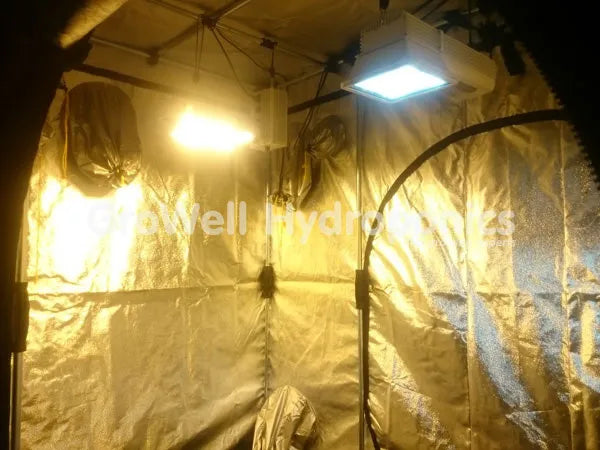
Amplify Taste, Aroma & Health with UV-A & UV-B
Your plants are like people - they need a healthy, balanced, varied diet to thrive.
For healthier, happier plants, you need to expose them to more wavelengths of light than they'd get from a standard grow light.
What are Wavelengths of Light?
The light spectrum is made up of lots of different wavelengths (colours).
What Wavelengths Do Grow Lights Use?
Plants tend to use wavelengths of 400nm – 700nm for growth – these wavelengths are known as the ‘PAR range’ (for Photosynthetically Active Radiation).
Most grow lights…
…emit wavelengths of light that are mostly from the PAR range (read more here…).

However, plants also benefit from other wavelengths
Wavelengths outside the PAR range may not affect growth as much, but they play a vital role in plant health, specifically UV-A and UV-B.
While standard grow lights will emit some wavelengths of light outside the PAR range, it’s only a minimal amount.
To really get the benefits of a wider spectrum, use a supplemental grow light.

Supplemental grow lights…
…will allow you to broaden your light spectrum.
You’ll expose plants to more wavelengths of light outside the PAR range, including UV-A and UV-B.
You should never rely solely on a supplemental light. Always use them alongside your main grow light, to get a broader light spectrum, closer to that of actual sunlight.
What are the UV Wavelengths?
UV light is not visible, and has a wavelength of 200nm – 400nm.
- UV-C (shortwave, 200 – 280nm)
- UV-A (middlewave, 280 – 215nm)
- UV-B (longwave 315 – 400nm)
How do UV-A and UV-B Enhance Plant Health?
1. Fruit and Flowers smell better and taste better
Plants grown under UV-A and UV-B emitting lights produce more:
- Essential oils
- Terpenes (smell)
- Flavonoids (taste)
All of this enhances the aroma and taste of your plants. It’s just what you want if growing fruit and flowers.

2. You’ll boost resistance to pests
Exposure to UV light, causes your plants to produce phytochemicals which boosts their resistance to pests.
While pesticides may harm your plants, UV light from a supplemental grow light won’t.

3. You improve medicinal properties
Believe it or not, it has been found that UV boosts the medicinal properties of plants.
Among other things, plants produce more flavonoids (which have anti-oxidative properties and boost vitamin D production).

What About UV-C Light?
UV-C is actually harmful to humans. Our Gavita Plasma supplemental light have a special shielding in the glass that filters out harmful UV-C.
Which Grow Lights are Best for UV Light?
Most grow lights will release some UV light, but it’ll only be a minimal amount.
To get enough UV-A and UV-B for it to make a difference, you’ll need a supplemental light.
Specifically, we recommend using a Gavita Plasma.
Your plants will be stronger, healthier, and yields will be greater.
Remember, you should never use a supplemental light on its own – always use it alongside your main grow light. We recommend using Gavita.






